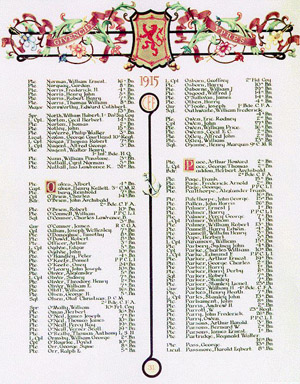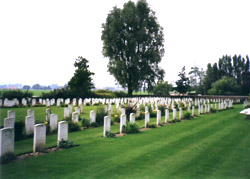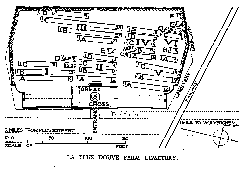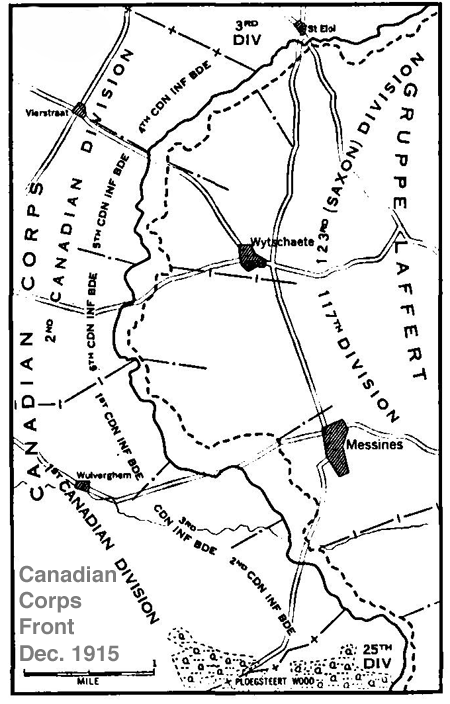

In memory of
Private
GEORGE PASS
June, 1885 - December 1, 1915
Military Service
Service Number: 46530Age: 29
Force: Army
Unit: Canadian Infantry (Quebec Regiment, Royal Highlanders of Canada -- The Black Watch)Division: 13th Battalion, 3rd Brigade, 1st Canadian Division
Commemorated on Page 31 of the First World War Book of Remembrance.
Medium sized pop-up image
553 X 708, 96 dpi, 160 k
Military Attestation papers:
When a recruit signed up for the Canadian Expeditionary Force in WW I he filled in an attestation paper that indicated his willingness to serve in the military and provided such information as date of birth, next of kin, height, weight, complexion, occupation, etc. As such these papers are of genealogical importance. The links below are to a scanned copy of the attestion papers of George Pass completed on 28 September, 1914, in Valcartier, Quebec when he was inducted into the Nova Scotia Batallion of the Canadian Expeditionary Force.
Medium sized pop up image
of military attestation paper (front)
700 X 1129, 72 dpi, 47 kFull sized pop up image
of military attestation paper (front)
1012 X 1632, 72 dpi, 87 kMedium sized pop up image
of military attestation paper (back)
700 X 1129, 72 dpi, 34 kFull sized pop up image
of military attestation paper (back)
1011 X 1632, 72 dpi, 61 kDate of Enlistment:
September 28, 1914, Valcartier, Quebec, CanadaAdditional Information:
It has always been presumed that this George Pass was Private George Venables Pass was the son of John Cockburn "Jack" Pass and Elizabeth Ann "Betsy Ann" Coburn , Harvey Station, York Co., NB. who was also the husband of Mrs. William D. Brown (formerly Pass), of 3, Hayward St., Salem, Mass., U.S.A. George Venables Pass was Born 16 Jun 1880, Harvey, and died 1 Dec 1915, WWI, Flanders. However, in his attestation papers George Pass vaguely lists his birth date as June 1885 and lists his next of kin unhelpfully as Mrs. Pass in New Glasgow, Nova Scotia. More information is needed to determine if there were more than one George Pass.Cemetery:
La Plus Douve Farm Cemetery, BelgiumLa Plus Douve Farm Cemetery is located 10.5 Km south of Ieper town centre on a road leading from the Rijselseweg N365, which connects Ieper to Wijtschate and on to Armentieres.
From Ieper town centre the Rijselsestraat runs from the market square, through the Lille Gate (Rijselpoort) and directly over the crossroads with the Ieper ring road. The road name then changes to the Rijselseweg.
On reaching the town of Mesen the first right hand turning leads onto the Niewkerkestraat (N314). 2 Km along the Nieuwkerkestraat lies the left hand turning onto Plus Douve. La Plus Douve Farm Cemetery lies 600 metres along Plus Douve, on the right hand side of the track. Visitors should note an 80 metre grassed access path which is unsuitable for vehicles.CASUALTY DETAILS: UK 101; Canada 88; Australia 86; New Zealand 61; Germany 9 Total Burials: 345
Grave Reference:
I. A. 18.
La Plus Douve Farm Cemetery
Medium sized pop-up image
600 X 437, 300 dpi, 197 kCemetery Plan
Medium sized pop-up image
500 X 339, 72 dpi, 8 kLa Petite Douve Raid, November, 1915.
In the valley of the river Douve, north of Ploegsteert Wood, were two farms. La Petite Douve was the object of a successful raid by the 7th Canadian Infantry Battalion in November 1915 and La Plus Douve, which was generally within the Allied lines, was used at times as a battalion headquarters. This farm was also known as Ration Farm as battalion transport could approach it by night with rations. The cemetery was started by the 48th (South Midland) Division in April 1915 and was in use until May 1918, when the area was taken by the Germans.
Canadian Corps Front line in December, 1915. Private George Pass served in the 13th Canadian Infantry Battalion, part of the 3rd Canadian Infantry Brigade, which was positioned sw of Messines when he was killed.
Medium sized pop-up image
680 X 1064, 72 dpi, 153 k13th Batallion - The Black Watch:
The Royal Highlanders of Canada gave birth to three Black Watch Battalions during the war. By the end of August, the regiment numbered over 1,000 men. As the numbers grew, volunteers from the Royal Highlanders were incorporated into the 13th Battalion. Over 60% of the initial recruits were of British origin. A large percentage were former British soldiers who had relocated to Canada at the turn of the century. While still in Canada, the 13th Battalion was placed in the 3rd Brigade of the 1st Division along with the 14th, 15th, and 16th battalions.
In October of 1914, the 1st Division departed for Great Britain. The Division remained in Great Britain for additional training until February 10th, 1915. On February 16, 1915, the unit departed for France. After spending time in France, in April of 1915, the battalion was used to reinforce British and Canadian lines in Ypres sector. The April 1915 battle for Ypres was the site of the first use of poison gas during the war. Despite the surprise of the German attack and their use of gas, the Canadian forces were able to stabilize their lines and fall back in good order to more defensible positions.
During its first actions of the war, the 13th Battalion lost 120 officers and 454 other ranks. The unit also won its first Victoria Cross (England's highest military honor) and the first VC for the Canadian Expeditionary Force (CEF). In his reports on the action, Sir John French was recorded as saying, "the bearing and conduct of the splendid Canadian troops averted a serious disaster."
During the remainder of 1915 and 1916, the 13th Battalion fought at battles in numerous locations including Festubert, Messines, Bailleul, Givenchy, Flanders, and the Somme.
Source:
Veterans Affairs Canada



